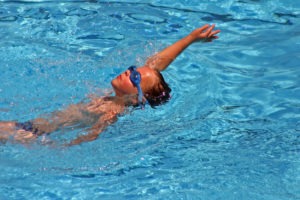Long Island Dry Drowning Accidents
 Swimming is a fun past time in the hot summer months and on family vacations. Maybe you visited Jones Beach, your neighbor’s pool, took a dip at the Dix Hills pool, or are planning a visit to the pool at Eisenhower Park. Don’t let a happy activity turn to a nightmare. Although a lifeguard may be on duty, it’s a good idea to keep an eye on your kids in the water. If you can’t, communication and a watchful eye during and after they have finished swimming may be life-saving.
Swimming is a fun past time in the hot summer months and on family vacations. Maybe you visited Jones Beach, your neighbor’s pool, took a dip at the Dix Hills pool, or are planning a visit to the pool at Eisenhower Park. Don’t let a happy activity turn to a nightmare. Although a lifeguard may be on duty, it’s a good idea to keep an eye on your kids in the water. If you can’t, communication and a watchful eye during and after they have finished swimming may be life-saving.
Definition of Dry Drowning
There is some debate about the definition of the term “dry drowning”, so we’ll discuss both uses. Sometimes situations where some water got in a child’s lungs and the child has a severe inflammatory reaction to the water hours after the incident may be called dry drowning. Others may call it “secondary drowning,” or “near drowning.” There is another drowning event, also referred to as “dry drowning,” in which suffocation occurs but no water ever entered the lungs. In these rare situations, the larynx (voice box) spasms and stays shut, causing involuntary suffocation. Sometimes this spasm is triggered by water droplets hitting the larynx, or a sudden high-speed submersion under water such as off a high-dive or a high-speed water slide. This latter form of dry drowning generally doesn’t occur when kids are simply swimming or playing in the pool. These patients are also immediately ill. Dry drowning can occur hours after your child’s swim session has ended so you’ll want to look for warning signs.
Safety Tips
Dry drowning usually happens within minutes after a child has struggled in the water, but when a secondary drowning occurs, a child may not show signs of distress for hours, or — in rare instances — even up to a day. It might not cause any effects immediately, but secondary drowning can cause edema or swelling of the lungs in a delayed fashion. And because the precipitating event may not be obvious — say, a toddler slips under water for a few seconds — it’s especially important that parents pay attention to how their child responds after.
Symptoms
Dry drowning and secondary drowning have the same symptoms. They include:
- Coughing
- Chest pain
- Trouble breathing
- Feeling extremely tired
Your child may also have changes in behavior such as such as irritability or a drop in energy levels. If your child suddenly seems extremely sleepy and it doesn’t match the level of activity they engaged in, it could mean the brain isn’t getting enough oxygen.
Things Parents Can Do to Help Prevent Drownings
- Provide constant and targeted supervision when children are near open water.
- Know exactly who is watching them.
- Keep in mind that drowning happens very quickly and usually it happens very silently without a lot of splashing as often portrayed in movies.
- Install safety and pool gates and door alarms.
- Enrollment in swim lessons at a young age. (Drowning is responsible for more deaths in children age 4 and younger than any other cause except congenital anomalies, the CDC reports.)
The laws involving pool and beach accidents are complex and proving negligence is often difficult and requires experts who understand the law and the legal system. The lawyers at Goldstein and Bashner understand the law and realize the trauma these accidents cause. If you or someone you love has been involved in a drowning accident, due to someone else’s negligence, contact us for a free consultation.








